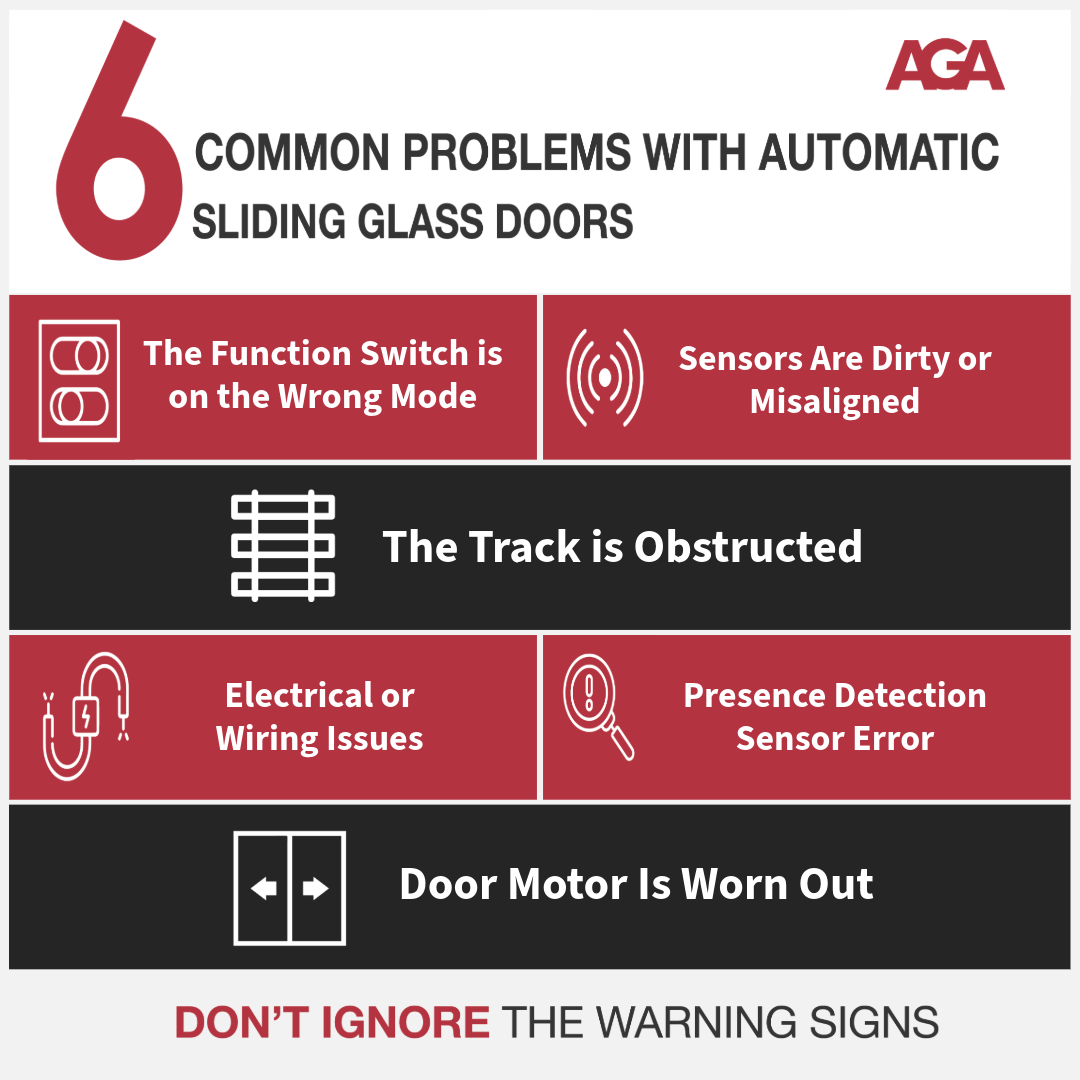
Automatic sliding glass doors are popular in commercial buildings, hospitals, schools, and retail stores—and for good reason. When your hands are full or foot traffic is heavy, automatic doors make entry and exit effortless. Students, employees, patients, and customers all benefit from smoother, more efficient movement throughout a building.
But what happens when your automatic sliding door stops working?
Below are the most common issues that affect automatic sliding glass doors, along with tips on how to troubleshoot them.
Quick Tip: Before you start diagnosing problems, make sure your door is unlocked and the power switch is turned on.
1. The Function Switch Is on the Wrong Mode
For your automatic sliding door to operate correctly, the function switch must be set to the right mode. For example, Stanley automatic doors should be set to “Automatic” and “Open.” If the switch is set to “Closed” or “Off,” the door simply won’t operate. Always double-check the settings first—it’s one of the most common and easily fixed issues.
2. Sensors Are Dirty or Misaligned
Automatic door sensors detect motion and activate the door. If they’re dirty, blocked, or slightly out of alignment, they can fail to detect approaching users.
How to fix it:
- Gently clean the sensor lenses with a soft, lint-free cloth.
- Ensure sensors are aimed correctly toward the door entry path.
3. The Track Is Obstructed
If your door is sticking, opening partially, or making grinding noises, check the door track for obstructions. Dirt, pebbles, or debris can prevent the door from gliding smoothly.
How to fix it:
- Inspect the track and remove any visible debris.
- Clean the track regularly.
- Apply a silicone-based lubricant if the door appears to be sticking (avoid oil-based lubricants).
4. Presence Detection Sensor Isn’t Working
These sensors prevent the door from closing on someone standing on the threshold. If they malfunction, the door may stay open longer than necessary—or not close at all.
How to fix it:
- Check for obstructions near the threshold area.
- Ensure sensor lenses are clean.
- If problems persist, schedule a professional inspection and recalibration.
5. Electrical or Wiring Issues
If the door doesn’t respond at all—even with the correct settings and clean sensors—you may have a wiring issue or a blown fuse.
Warning: Avoid DIY repairs involving electrical components. This type of troubleshooting should only be done by a licensed technician.
6. The Door Motor Is Worn Out
If the door opens slowly, stops midway, or makes loud mechanical noises, the motor could be failing. Like any moving part, motors wear out over time, especially in high-traffic environments.
What to do:
- If you notice motor issues, turn off the system and call a door technician.
- Routine maintenance can often detect these problems early before total failure.
Don’t Ignore the Warning Signs
While minor issues like dirty sensors can be fixed quickly, problems with wiring, motor function, or sensor calibration require professional attention.
If your automatic sliding glass door isn’t working as it should, don’t wait. A malfunctioning door is not only inconvenient—it can be a safety risk and code violation.
Contact AGA
Need help troubleshooting or servicing your automatic sliding glass doors? Our trained technicians offer fast, reliable repair and maintenance. Contact us today to schedule an inspection or emergency service.

